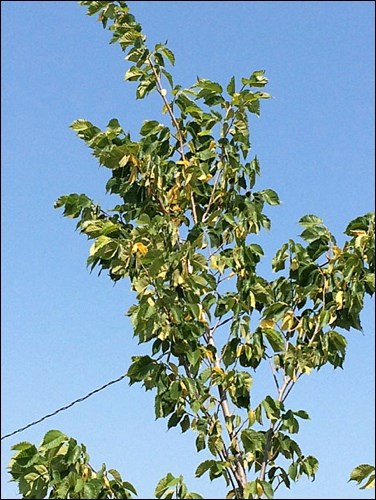The Battlefords area, like many other areas, is experiencing what I would consider extreme drought conditions. It’s so dry, the dogs are marking their territory with chalk. Even the fish are getting ticks.
What a year. First the oil patch tanks, and now agriculture, our mainstay industry, is dealing with drought conditions that will have a huge effect on harvest results in many different ways.
I’ve been living in the Battlefords since 1990 and I can’t recall, considering the lack of rain combined with relentless and intense heat, a time when these conditions prevailed for this length of time. There were a few years that came close.
When I worked for the City of North Battleford, we had a one-ton truck with a water tank on it for watering our planted trees all the time in regular years. In droughty years, we put water tanks in the three-ton trucks and had up to three units watering trees in parks and on boulevards just to keep things alive. In the bigger cities, they actually contract with companies to water trees and landscapes to protect their investment.
Supplemental watering is the only way to keep trees from succumbing to these brutal conditions. It’s worth it; a city without trees isn’t fit for a dog.
Water is vital to all plants, trees included. Big trees can pull hundreds of litres of water from the soil in a day, but up to 95 per cent of that can be given off as transpiration into the air. Prolonged drought and dry soil conditions interfere with the tree’s ability to take up essential nutrients. Without the nutrients, the rate of photosynthesis – tree food production – goes down and the tree’s health goes into decline.
Every tree and shrub, whether it is in the backyard landscape or in nature, has different water requirements and therefore different tolerances to extreme drought conditions. Plant size, air temperature, humidity and wind all affect the moisture available to a plant.
There are little water valves in the leaves of green plants called stomatal openings. These openings naturally adjust for the environmental conditions and actually control transpiration rates. It's a preservation thing. When a plant is experiencing dry conditions, these openings close down to conserve the moisture within. When a plant gives off more water than it can draw from the soil, it wilts.
Under drought conditions, many trees will show wilt by the afternoon on a hot day, but if the leaves are not turgid, i.e., fully hydrated, not wilted, by morning, you have a tree that is in a serious moisture-stressed condition.
Other natural responses to prolonged droughty conditions can include not only wilt but early leaf drop, the shedding of fruit and twig die-back. Severe drought, which I believe we are on the cusp of, can cause root loss, total leaf drop and tree death. First, the tree goes into a water conservation mode; next it goes into a self-preservation mode and begins to rid itself of tree parts it can’t sustain given the environmental conditions.
The first trees to be affected will be quick growing trees such as some of the hybrid poplars as well as trees that are newly planted, as in the past five or so years, that do not have a fully developed root system yet.
The only answer is supplemental watering. Lots of it. It will be all but impossible to drown a tree in these conditions.
It is so dry right now that they just closed two lanes of the pool and the Battle River is only running twice a week. Water your trees.
Hopefully by the time you are reading this absolutely riveting article, the rains have come and brought relief to the crops and landscapes and that damage to plants of all kinds is minimal and can be reversed.



